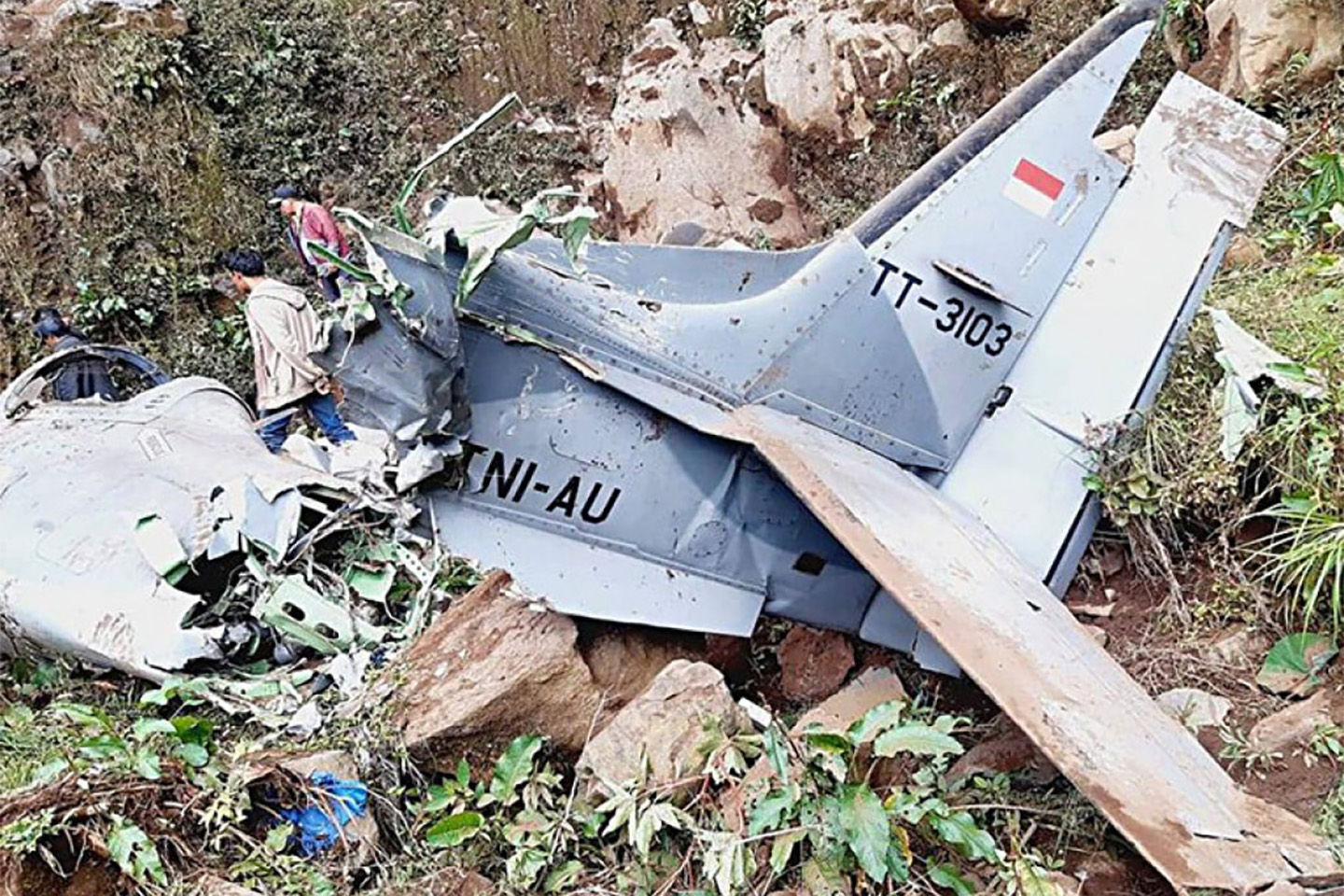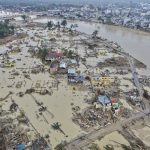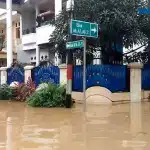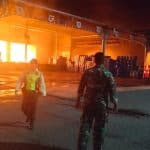Liga Asuransi – Dear risk takers, how are you? I hope your business is doing well.
As a senior insurance broker, I want to write an article reaction to an air transportation accident that just happened in Pasuruan, East Java Province, Indonesia on November 16, 2023. If you are interested in this article, please share it with your friends so they can understand as much as you do.
In the vast expanse of the sky, where dreams take flight and ambitions soar, there exists an undeniable truth — aviation, while awe-inspiring, is not without its perils. The recent heart-wrenching incident in Pasuruan, East Java, serves as a poignant reminder that even the most advanced technology and skilled pilots cannot eliminate the inherent risks of air transportation.
As the echoes of the Super Tucano tragedy reverberate, it is crucial for all stakeholders in the aviation industry to pause and reflect on the imperatives of safety, risk management, and insurance. The skies, once a symbol of boundless possibilities, have witnessed the unforgiving consequences of neglecting these vital aspects.
Behind every flight, there is a tapestry of lives — skilled aviators who dedicate their passion to the skies, families who entrust their loved ones to the wings of steel birds, and communities impacted by the resonance of each engine. The loss of four brave souls in Pasuruan has left an indelible mark, urging us to acknowledge the fragility of life and the responsibility we bear towards those who navigate the heavens.
For us, the custodians of risk, as insurance brokers, this tragedy is a somber call to action. It compels us to advocate, more fervently than ever, for the prioritization of safety measures, rigorous risk management protocols, and the indispensable role of insurance in safeguarding against unforeseen adversities.
As we delve into the complexities of this incident, let us not forget that insurance is not just a financial instrument; it is a shield, a guardian angel that stands between the aspirations of aviators and the stark reality of the unpredictable skies. The aviation community must unite in its commitment to fortify this shield, ensuring that those who take flight can do so with the reassurance that their safety is paramount.
May this article serve as a poignant reminder that, in the realm of aviation, our collective commitment to safety and resilience is not just a professional duty but a solemn pact to protect the dreams that take flight in the vast expanse of the sky?
THE ACCIDENT OF TWO SUPER TUCANO FIGHTER TRAINING AIRCRAFT
The accident involving two Super Tucano fighter training aircraft in Pasuruan, East Java, on November 16, 2023, has raised concerns and serves as a serious warning for the Indonesian National Armed Forces (TNI) to comprehensively overhaul their primary weapon system (alutsista). This incident marks the second time Super Tucano planes have crashed, following a similar event in Malang in 2016.
The Indonesian Air Force (TNI AU) is currently conducting an investigation to determine the exact cause of the accident. The chronology of events began when two Super Tucano aircraft, with registration numbers TT-3111 and TT-3103, piloted by Lieutenant Colonel (Pnb) Sandhra Gunawan, Colonel (Adm) Widiono, Major (Pnb) Yuda A Seta, and Colonel (Pnb) Subhan, took off from Abdulrachman Saleh Air Base in Malang for formation training.
At 10:51 AM, both aircraft lost contact, and at 11:18 AM, they were reported to have crashed in the Keduwung area, Puspo District, Pasuruan Regency. The four TNI soldiers aboard the planes tragically lost their lives in the accident. Air Force Information Service Chief, Air Marshal R Agung Sasongkojati, stated that the conditions of the two aircraft were initially deemed fit for flight.
The Super Tucano, an advanced training aircraft with anti-guerrilla warfare capabilities, is equipped with various weapons and self-defense systems. The Indonesian government purchased 16 Super Tucano aircraft from Brazil in 2012, deploying them to Squadron 21 Abdulrachman Saleh Malang as replacements for the aging OV-10F Bronco aircraft.
THE RISKS OF AIR TRANSPORTATION
Air transportation is a complex and dynamic industry that involves various risks, ranging from operational challenges to external factors. Identifying and managing these risks is crucial for ensuring the safety of passengers, crew, and valuable cargo. Here are some key risks associated with air transportation:
Operational Risks:
- Mechanical Failures: Technical issues or malfunctions in aircraft systems can lead to accidents.
- Human Error: Mistakes made by pilots, air traffic controllers, ground crew, or maintenance personnel can result in incidents.
- Weather Conditions: Adverse weather, such as turbulence, thunderstorms, or fog, poses operational challenges and increases the risk of accidents.
Security Risks:
- Terrorism: The aviation industry is a target for terrorism, including hijackings and bombings.
- Cybersecurity: Increased reliance on digital systems makes airlines susceptible to cyber threats, including data breaches and hacking.
Regulatory and Compliance Risks:
- Regulatory Changes: Frequent changes in aviation regulations and compliance requirements can pose challenges for airlines and aviation-related businesses.
- Non-compliance: Failure to adhere to safety and regulatory standards can result in penalties, legal issues, and operational disruptions.
Financial Risks:
- Fuel Price Volatility: Fluctuations in fuel prices can significantly impact operational costs for airlines.
- Economic Downturns: Economic instability can lead to reduced demand for air travel, affecting airline profitability.
- Insurance Costs: The cost and availability of aviation insurance can be influenced by industry events, accidents, and global risk factors.
Environmental Risks:
- Climate Change Impact: Environmental concerns and regulations may affect the aviation industry’s long-term sustainability.
- Noise and Emissions: Increased scrutiny on aircraft noise and emissions can lead to regulatory challenges and public relations issues.
Supply Chain Risks:
- Global Events: Natural disasters, geopolitical tensions, or global health crises can disrupt the supply chain, affecting aircraft manufacturing and maintenance.
- Supplier Reliability: Dependence on suppliers for critical components and services poses a risk if the supply chain is compromised.
Geopolitical and External Risks:
- Political Instability: Unstable political environments in certain regions may pose risks to air travel.
- Pandemics: Global health crises, as demonstrated by events like the COVID-19 pandemic, can severely impact air travel demand and operations.
Natural Disasters:
Earthquakes, Hurricanes, and Other Natural Events: These events can directly impact airport infrastructure, disrupt air travel, and pose challenges for emergency response.
Crisis Management and Communication Risks:
- Public Relations Crises: Accidents, incidents, or controversies can lead to reputational damage if not managed effectively.
- Emergency Response: Inadequate crisis management and communication during emergencies can exacerbate the impact of an incident.
THE HUMAN ERRORS
Human errors in the context of air transportation pose significant risks, as they can lead to accidents, incidents, and operational disruptions. Despite advancements in technology and training, human factors remain a critical element in aviation safety. Here are some key risks associated with human errors in the aviation industry:
Pilot Error:
- Navigation Mistakes: Errors in navigation, misinterpreting instruments, or miscalculating routes can lead to flight deviations and potential collisions.
- Procedural Mistakes: Failure to adhere to standard operating procedures (SOPs) during takeoff, landing, or other critical phases of flight can result in accidents.
Air Traffic Controller Error:
- Miscommunication: Misunderstandings or unclear communication between pilots and air traffic controllers can lead to improper instructions and compromised safety.
- Traffic Separation Issues: Errors in managing the separation of aircraft can result in the risk of mid-air collisions or near misses.
Maintenance Personnel Error:
- Faulty Repairs or Inspections: Mistakes made during aircraft maintenance, repairs, or inspections can compromise the integrity of the aircraft systems and contribute to mechanical failures.
- Incorrect Installation of Components: Errors in installing or replacing components can lead to malfunctions during flight.
Crew Coordination and Communication:
- Cockpit Resource Management (CRM) Issues: Poor communication and coordination among the flight crew can contribute to misunderstandings, inefficiencies, and errors.
- Crew Fatigue: Fatigued crew members are more prone to errors in decision-making, reaction times, and overall performance.
Training and Skill Deficiencies:
- Inadequate Training: Lack of proper training or recurrent training can result in pilots and crew members being ill-equipped to handle complex situations.
- Insufficient Experience: Inexperienced personnel may struggle to manage unexpected scenarios or emergencies effectively.
Human Factors and Cognitive Limitations:
- Situational Awareness Issues: Pilots and crew members may experience difficulties in maintaining accurate situational awareness, especially in dynamic or high-stress situations.
- Decision-Making Under Pressure: High-stress situations can impact decision-making processes, potentially leading to suboptimal choices.
Communication Breakdowns:
- Language Barriers: Miscommunication may arise when crew members or air traffic controllers speak different languages or have varying levels of proficiency in a common language.
- Crew Resource Language Issues: Misinterpretation or misunderstanding of communications due to differences in jargon or terminology.
Automation Dependency:
- Overreliance on Automation: Pilots relying too heavily on automated systems may face challenges when systems fail or when they need to take manual control unexpectedly.
- Automation Confusion: Misunderstanding or incorrectly using automated systems can lead to errors in navigation, altitude control, or other critical functions.
THE RISK MANAGEMENT OF AIR TRANSPORTATION
Effective risk management in transportation operations is essential for ensuring safety, minimizing disruptions, and maintaining the integrity of the entire transportation system. Here are the key components of good risk management in transportation:
Risk Assessment and Identification:
- Comprehensive Analysis: Conduct a thorough analysis of potential risks associated with transportation operations. This includes assessing operational, financial, environmental, and safety risks.
- Scenario Planning: Consider various scenarios to identify and anticipate potential challenges. This involves evaluating the impact of external factors, such as weather events, geopolitical situations, and economic changes.
Safety Protocols and Compliance:
- Regulatory Compliance: Ensure strict adherence to local, national, and international safety regulations and standards relevant to transportation modes, whether it’s aviation, maritime, rail, or road.
- Continuous Monitoring: Regularly monitor and update safety protocols to reflect changes in regulations, industry best practices, and technological advancements.
Training and Skill Development:
- Employee Training: Provide comprehensive training programs for transportation personnel, emphasizing safety protocols, emergency response procedures, and the use of advanced technologies.
- Crisis Management Training: Equip employees with the skills needed to manage crises effectively, including communication, decision-making, and coordination during emergencies.
Technology Integration:
- Advanced Technologies: Integrate cutting-edge technologies, such as GPS tracking, real-time monitoring, and predictive analytics, to enhance operational efficiency and identify potential risks proactively.
- Automation: Implement automation where feasible to reduce the reliance on manual processes, minimizing the risk of human errors.
Supply Chain Visibility:
- End-to-End Visibility: Establish visibility across the entire supply chain to identify potential disruptions or bottlenecks. This includes tracking the movement of goods, monitoring inventory levels, and collaborating with suppliers and logistics partners.
- Diversification: Diversify suppliers and transportation routes to reduce the impact of disruptions in specific areas.
Emergency Response Planning:
- Comprehensive Plans: Develop and regularly update emergency response plans that cover various scenarios, including accidents, natural disasters, and other unforeseen events.
- Coordination: Foster collaboration with local authorities, emergency services, and relevant stakeholders to ensure a coordinated response to emergencies.
Insurance Coverage:
- Comprehensive Insurance Policies: Invest in comprehensive insurance coverage that addresses potential risks associated with transportation operations, including liability, cargo damage, and business interruption.
- Regular Review: Periodically review and update insurance policies to align with evolving risk landscapes and changing business operations.
Environmental Sustainability:
- Environmental Risk Mitigation: Implement measures to reduce the environmental impact of transportation operations, such as fuel-efficient technologies, emission controls, and sustainable practices.
- Regulatory Compliance: Stay informed about and comply with environmental regulations to minimize the risk of legal and reputational issues.
Continuous Monitoring and Review:
- Regular Audits: Conduct regular audits and assessments of transportation operations to identify areas for improvement and ensure ongoing compliance with safety and risk management standards.
- Feedback Mechanisms: Establish feedback mechanisms from employees, customers, and other stakeholders to capture insights into potential risks and areas for improvement.
Collaboration and Information Sharing:
- Industry Collaboration: Collaborate with industry peers, regulatory bodies, and relevant organizations to share best practices, insights, and lessons learned in risk management.
- Information Sharing: Establish a culture of open communication and information sharing within the organization to ensure that everyone is aware of potential risks and can contribute to their mitigation.
THE TYPE OF INSURANCE COVERAGE FOR AIR TRANSPORTATION
Insurance coverage for aviation operations is crucial to mitigate the financial risks associated with the complex and high-stakes nature of the aviation industry. Aviation insurance provides protection against a range of potential liabilities and losses, including damage to aircraft, bodily injury, and property damage. Here are the key types of insurance coverage for aviation operations:
Hull Insurance:
- Physical Damage Coverage: Hull insurance, also known as aircraft hull insurance, provides coverage for physical damage to the aircraft itself. This includes damage caused by accidents, collisions, fire, or other covered perils.
- Agreed Value: The policy typically pays an agreed-upon value (agreed value clause) for the aircraft in the event of a total loss.
- Third-Party Liability: Aviation liability insurance covers bodily injury and property damage caused to third parties, including passengers, pedestrians, and other aircraft. This coverage is essential for protecting against legal claims and liabilities arising from accidents.
- Passenger Liability: Provides coverage for injuries sustained by passengers during flight.
Combined Single Limit (CSL) Policies:
Single Aggregate Limit: Some policies combine both hull and liability coverage under a single aggregate limit. This can simplify coverage management and provide flexibility in meeting specific insurance needs.
War Risk and Confiscation Insurance:
- Political Risks: War risk insurance covers damages caused by acts of war, terrorism, or political unrest. Confiscation insurance provides coverage in case the aircraft is confiscated or detained by a government entity.
- High-Risk Areas: Essential for flights over regions with increased geopolitical risks.
In-Flight Insurance:
- Passenger Personal Accident: Offers coverage for passengers in the event of injury, disability, or death during a flight.
- Crew Personal Accident: Similar to passenger personal accident insurance but specifically tailored for the crew members.
Hangarkeepers Insurance:
Property Damage: Protects against damage to aircraft while stored in a hangar or maintenance facility. It covers the aircraft owner or operator for liability arising from damage to third-party aircraft or property while in their care, custody, or control.
Airport Liability Insurance:
- Property Damage and Bodily Injury: Provides coverage for damages and injuries that may occur on the airport premises, including runways, taxiways, and terminal areas.
- Products and Completed Operations Liability: Covers liabilities arising from products or services provided by the airport, such as maintenance or repair work.
Loss of License Insurance:
Pilot Coverage: Provides financial support to pilots who lose their license due to medical reasons, ensuring they receive compensation during the period they are unable to fly.
Environmental Liability Insurance:
Pollution Liability: Covers costs associated with environmental damage caused by aviation accidents, including fuel spills and contamination.
Legal Liability Insurance:
Legal Defense Costs: Covers legal expenses incurred in defending against claims or lawsuits related to aviation accidents.
Aviation Workers’ Compensation:
Employee Injuries: Provides coverage for medical expenses and lost wages for employees injured on the job.
THE CRUCIAL OF THE SERVICE OF AN INSURANCE BROKER
The aviation industry relies on insurance brokers for several crucial reasons, considering the unique and complex risks associated with aviation operations. Insurance brokers act as intermediaries between aviation operators (airlines, aircraft owners, and other entities) and insurance providers, facilitating the procurement of appropriate insurance coverage. Here’s why the aviation industry benefits from the services of insurance brokers:
Specialized Expertise:
- Complex Risks: Aviation risks are intricate and multifaceted, covering areas such as aircraft hull, liability, war risk, and more. Insurance brokers possess specialized knowledge of the aviation industry, its regulatory landscape, and the specific risks associated with different aviation activities.
- Industry Trends: Brokers stay abreast of industry developments, emerging risks, and changes in regulations, allowing them to provide informed advice to aviation clients.
Risk Assessment and Analysis:
- Tailored Solutions: Insurance brokers conduct in-depth risk assessments to understand the unique risk profile of each aviation client. They analyze the client’s operations, fleet, routes, and other factors to recommend tailored insurance solutions that address specific needs.
- Identifying Coverage Gaps: Brokers identify potential coverage gaps in existing insurance policies and work to ensure comprehensive coverage that adequately protects against various risks.
Market Access and Negotiation:
- Access to Multiple Insurers: Insurance brokers have access to a wide network of insurance providers, including both domestic and international markets. This enables them to obtain competitive quotes from multiple insurers, fostering a more favorable negotiating position.
- Leveraging Relationships: Established relationships with insurers allow brokers to negotiate better terms, coverage enhancements, and competitive premiums on behalf of their aviation clients.
Claims Management:
- Advocacy during Claims: In the event of a claim, insurance brokers act as advocates for their clients, facilitating communication between the client and the insurer. They help ensure a fair and prompt claims settlement process.
- Expertise in Claims Handling: Brokers have expertise in navigating the complexities of claims handling, including understanding policy terms, documenting losses, and facilitating the resolution of disputes.
Regulatory Compliance:
- Navigating Regulatory Requirements: Aviation is subject to stringent regulatory requirements. Insurance brokers assist clients in navigating and ensuring compliance with aviation insurance regulations, both at national and international levels.
- Certificates of Insurance: Brokers help clients obtain and manage certificates of insurance, which are often required by regulatory authorities, lessors, and other stakeholders.
Risk Management Guidance:
- Loss Prevention Strategies: Insurance brokers offer guidance on risk management strategies to help aviation clients minimize the likelihood of accidents and losses.
- Safety and Compliance Programs: Brokers may provide insights into safety programs, training initiatives, and other measures to enhance overall risk management within the aviation organization.
Cost-Effective Solutions:
- Competitive Premiums: Brokers leverage their market knowledge to secure cost-effective insurance solutions for their clients. This includes identifying opportunities for premium reductions and cost savings without compromising coverage quality.
- Efficiency in Renewals: Brokers streamline the renewal process, ensuring that clients receive competitive quotes and have ample time to assess their coverage needs before renewing policies.
One of the leading insurance brokers in Indonesia focusing on Air Transportation insurance is L&G Insurance Broker.
For all your insurance needs in Indonesia please call L&G now!
—
LOOKING FOR INSURANCE PRODUCTS? DON’T WASTE YOUR TIME AND CONTACT US RIGHT NOW
L&G HOTLINE 24 HOURS: 0811-8507-773 (CALL – WHATSAPP – SMS)
website: lngrisk.co.id
E-mail: customer.support@lngrisk.co.id
—















